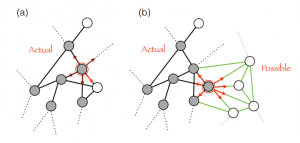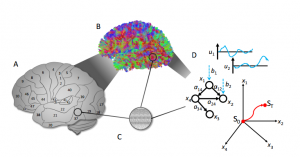Ralf Schmälzlea,b, Matthew Brook O’Donnellb , Javier O. Garciac , Christopher N. Casciob , Joseph Bayerd , Danielle S. Bassette,f, Jean M. Vettelc,e,g, and Emily B. Falkb,1 a Department of Communication, Michigan State University, East Lansing, MI 48824; b Annenberg School for Communication, University of Pennsylvania, Philadelphia, PA 19104; c Human Research and Engineering Directorate, US Army Research Laboratory, Aberdeen Proving Ground, MD 21005; d School of Communication, The Ohio State University, Columbus, OH 43210; e Department of Bioengineering, University of Pennsylvania, Philadelphia, PA 19104; f Department of Electrical & Systems Engineering, University of Pennsylvania, Philadelphia, PA 19104; and g Department of Psychological and Brain Sciences, University of California, Santa Barbara, CA 93106
Social ties are crucial for humans. Disruption of ties through social exclusion has a marked effect on our thoughts and feelings; however, such effects can be tempered by broader social network resources. Here, we use fMRI data acquired from 80 male adolescents to investigate how social exclusion modulates functional connectivity within and across brain networks involved in social pain and understanding the mental states of others (i.e., mentalizing). Furthermore, using objectively logged friendship network data, we examine how individual variability in brain reactivity to social exclusion relates to the density of participants’ friendship networks, an important aspect of social network structure. We find increased connectivity within a set of regions previously identified as a mentalizing system during exclusion relative to inclusion. These results are consistent across the regions of interest as well as a whole-brain analysis. Next, examining how social network characteristics are associated with task-based connectivity dynamics, we find that participants who showed greater changes in connectivity within the mentalizing system when socially excluded by peers had less dense friendship networks. This work provides insight to understand how distributed brain systems respond to social and emotional challenges and how such brain dynamics might vary based on broader social network characteristics.
Read the full article here.



 Nevertheless, computer scientists, doctors, economists and the like exercise a modicum of control over many of these networks.
Nevertheless, computer scientists, doctors, economists and the like exercise a modicum of control over many of these networks.